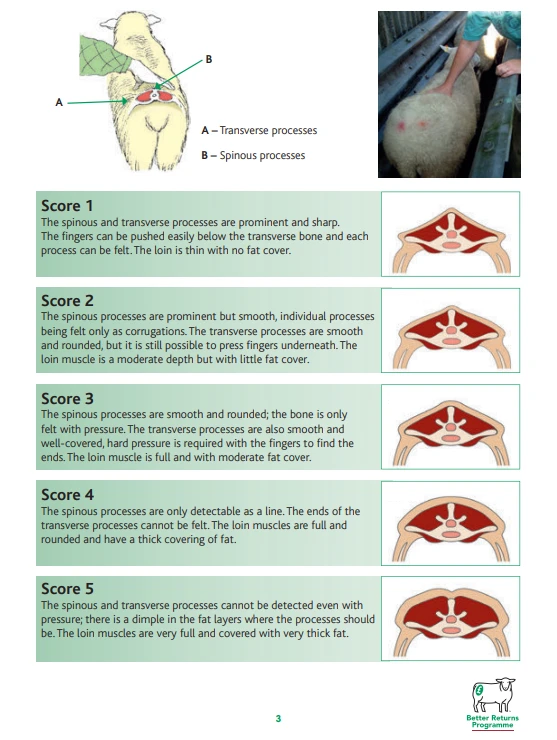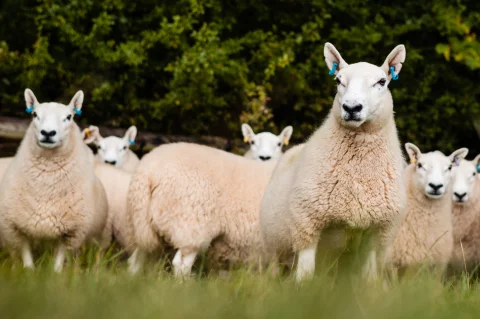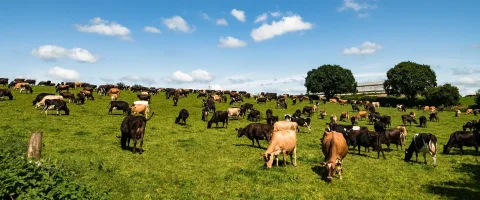Are you ewe ready for lambing season?.

Good nutrition is essential throughout the production cycle of the ewe, but lambing time is when we often see problems from not getting it quite right.
The easiest and cheapest way to check your flock’s nutrition status is to body condition score. This lets you know when your ewes might need extra support in the run up to lambing, but it is also important to make sure you do it regularly, so you know if their energy demands are being met. At lambing you are aiming for 2.5 for upland ewes and 3.0-3.5 in lowland ewes.
For advice on body condition scoring please ask our vets next time they are on farm, in the meantime here is a handy guide: https://www.fas.scot/downloads/tn702-body-condition-scoring-mature-sheep/

Energy
Insufficient energy intake in the last third of pregnancy can lead to twin lamb disease. Thin ewes need more energy than others as they have no body reserves, but fat ewes are also at risk of twin lamb disease as their rumen has less room to expand due to the fat in their abdomen.
If you have had your lambing forage (hay/haylage etc.) analysed, then get in touch with our vets to give you an impartial nutrition plan for how much concentrate to feed this lambing. Splitting ewes according to body condition and number of expected lambs is the best management practice for targeted nutrition. Also remember if fostering lambs into singles then feed these ewes similar to the twin bearing ewes so they can produce enough milk for two.
Protein
Poor protein intakes in the last third of gestation will affect the colostrum quantity and quality of your ewes. Poor colostrum will put lambs at risk of watery mouth, joint ill and death. You can measure colostrum quality using a brix refractometer, aiming for over 26.5%. Timing is important too, lambs should receive 50ml/kg in the first two hours of birth, after this time the ability to absorb the antibodies drops rapidly. Colostrum absorbed in the first six hours is crucial for the lamb’s immune system. Over the first 24 hours a lamb should receive 200ml/kg bodyweight, i.e. 5 kg lamb needs 1 litre.
Assessing Protein and Energy Intakes
We can easily check a ewe’s protein and energy status in the last 3-6 weeks pre-lambing by taking blood samples from ewes expecting twins and triplets. Blood sampling should occur before concentrate feeding or four hours afterwards. If results indicate low protein or energy intake during this period there is till time to act to prevent problems.
Case Studies
Last year we performed metabolic bloods on a number of farms. The farm below was not particularly concerned about nutrition but just wanted to check things were where they should be in the run up to lambing.
Indoor lambing, approximately 250 Suffolk Cross ewes. Usually experience 3-4 cases of twin lamb disease, don’t really get watery mouth but do see some joint ill at 3-4 weeks of age. All ewes are currently housed, being fed ad-lib (free access) hay and 18% crude protein ewe nuts twice a day.

Albumin assess long-term protein intakes, this flock has had good protein intake up until recently. Urea reflects short-term protein intake, as four out of the ewes are low in urea, the protein level of the diet needs addressing so that colostrum production isn’t affected.
Beta-hydroxy butyrate (BHB) levels rise when the ewe must use fat stores for energy because the diet doesn’t meet requirements. The BHB levels were within range for this flock so risk of twin lamb should be minimal.
We discussed protein intakes, and as the energy needs were being met on the current diet and the ewes were already on the highest protein nut available, it is likely that the hay had poor protein levels. We increased the level of concentrates being fed to help protein levels, bloods were then taken for urea two weeks later and they were all within the recommended range.
For future planning we decided to get the hay analysed before housing so that a proper diet plan could be made with exact amounts of concentrate needing to be fed in the run up to lambing. We also have time before hay making to try and boost the protein content of the hay by adding in other species such as clovers, birdsfoot trefoil or lucerne, which hopefully in the long run can help keep feed costs down.

News & Insights
All news & insights
New Bovine Semen Collection Service

Are you ewe ready for lambing season?
